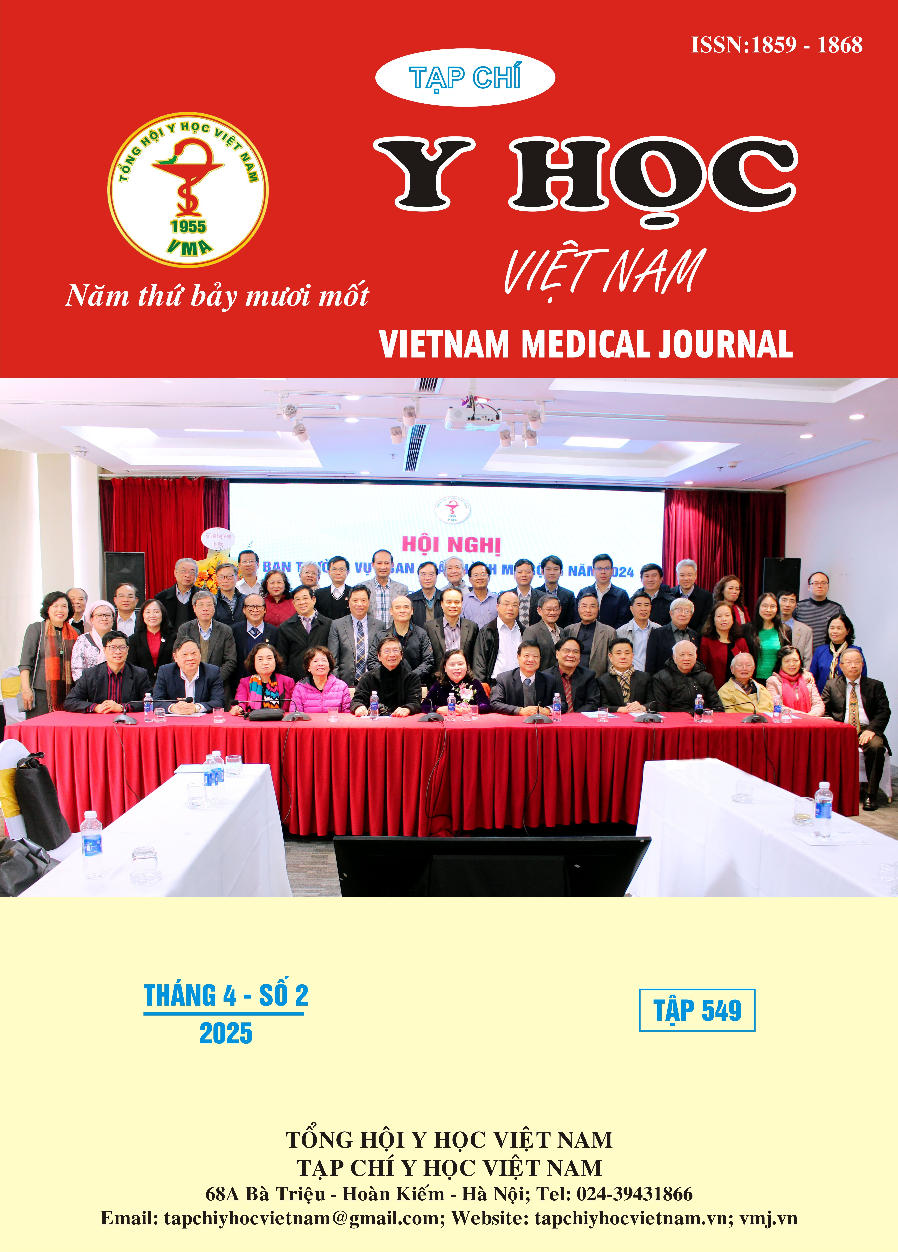RESULTS OF TOTAL GASTRECTOMY AFTER NEOADJUVANT CHEMOTHERAPY FOR GASTRIC ADENOCARCINOMA AT K HOSPITAL
Main Article Content
Abstract
Objective: To describe the clinical and paraclinical characteristics as well as early and long-term outcomes in patients with gastric adenocarcinoma undergoing total gastrectomy after neoadjuvant chemotherapy at K Hospital. Subjects and Methods: A total of 55 gastric adenocarcinoma patients underwent neoadjuvant chemotherapy followed by total gastrectomy at K Hospital from January 2017 to January 2023. Results: The median age was 55 years, with a male-to-female ratio of 1.4:1. Only 25.5% of patients had a history of peptic ulcer disease. The most common symptom was epigastric pain (96.4%), which was also the main reason for hospital admission (63.6%). Tumor location was most frequently at the cardia (49.1%), followed by the body (38.2%), and antrum (1.8%). Six patients (10.9%) had diffuse type gastric cancer. The most common morphological types were infiltrative ulceration (40%) and fungating tumors (36.4%). 60% had T4a tumors, 30.9% had T3 tumors, and 9.1% (5 patients) had T4b tumors invading adjacent organs such as the transverse colon, spleen, or pancreas. Bulky lymph nodes were observed in 29.1% of cases, and 2 patients had solitary ovarian metastases. Complete response was achieved in 5 patients (9.1%), while 8 patients (14.5%) experienced disease progression. Extended total gastrectomy was required in 10.9% of cases. No intraoperative complications were reported. The average number of lymph nodes resected was 14.7 ± 6.2, with a postoperative lymph node metastasis rate of 56.4% and lymphovascular or perineural invasion detected in 41.8% of patients. The postoperative complication rate was 25.5%. Overall survival rates at 1, 3, and 5 years were 75.6%, 52.0%, and 42.6%, respectively. Progression-free survival rates at 1, 3, and 5 years were 62.7%, 39.2%, and 33.6%, respectively.
Article Details
Keywords
gastric cancer, total gastrectomy, neoadjuvant chemotherapy, survival rate, complication rate
References
2. Chử Quốc Hoàn. Đánh giá kết quả sống thêm sau điều trị ung thư dạ dày bằng hóa chất trước phẫu thuật cắt dạ dày vét hạch D2 tại Khoa Điều trị Theo Yêu Cầu Bệnh viện K. 2022
3. Bray F, Laversanne M, Sung H, et al. Global cancer statistics 2022: GLOBOCAN estimates of incidence and mortality worldwide for 36 cancers in 185 countries. CA: A Cancer Journal for Clinicians. 2024;74(3):229-263.
4. Cunningham D, Allum WH, Stenning SP, et al. Perioperative chemotherapy versus surgery alone for resectable gastroesophageal cancer. N Engl J Med. 2006;355(1):11-20.
5. Al-Batran SE, Homann N, Pauligk C, et al. Perioperative chemotherapy with fluorouracil plus leucovorin, oxaliplatin, and docetaxel versus fluorouracil or capecitabine plus cisplatin and epirubicin for locally advanced, resectable gastric or gastro-oesophageal junction adenocarcinoma (FLOT4): a randomised, phase 2/3 trial. Lancet. 2019;393(10184):1948-1957.
6. Zhang X, Liang H, Li Z, et al. Perioperative or postoperative adjuvant oxaliplatin with S-1 versus adjuvant oxaliplatin with capecitabine in patients with locally advanced gastric or gastro-oesophageal junction adenocarcinoma undergoing D2 gastrectomy (RESOLVE): an open-label, superiority and non-inferiority, phase 3 randomised controlled trial. Lancet Oncol. 2021;22(8):1081-1092.
7. Terashima M, Iwasaki Y, Mizusawa J, et al. Randomized phase III trial of gastrectomy with or without neoadjuvant S-1 plus cisplatin for type 4 or large type 3 gastric cancer, the short-term safety and surgical results: Japan Clinical Oncology Group Study (JCOG0501). Gastric Cancer. 2019;22(5):1044-1052.


